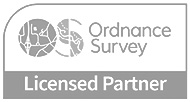We’ve been in the cartography business for almost 60 years, and cartography as a subject has piqued interest for centuries, from the earliest navigators around the world. But how does one give it a more practical context and definition? We thought we’d unpack this for you.
How do you define cartography?
Cartography can be defined as the practice or study of map making. To further explain, the art of cartography and therefore the work of the cartographer allows us to understand the geographic landscape around us through a principle of mathematical scale, graphical representation and associated symbology. Cartography has been around for thousands of years and much has been written about the history of cartography and the complexities of map projections, however in this short blog we focus on defining the modern cartographic process from initial needs assessment to delivery of the finished map in the agreed format.
What is the geographic scope and how can it be mapped?
These seemingly obvious questions are fundamental to any map commission as they determine the subsequent methodology and techniques to be adopted.
In addressing the geographic scope, the cartographer is considering location, map scale and coverage or extent. With this defined, the cartographer can then assess where the necessary base data or mapping is coming from; this could be from existing data sources, from satellite imagery or even from commissioning a dedicated surveillance aircraft or drone to capture the most up to date land features. All of these types of data can of course be supplemented by client data, for example; from lists of locations or points of interest in a spreadsheet; from previously used maps or plans; or even from hand drawn annotated sketches for the cartographer to interpret.
To give an illustration of this, as a UK mapping company we have ample access to data for the UK but less so for central Zambia, so the challenges were quite different when we are asked for a building-level wayfinding map for Telford but also a series of expedition maps for a 900km stretch of the Kafue River in Zambia!
What is the purpose of the map?
The cartographer needs to understand the purpose of the map and the audience(s) involved; who is the user and what value does the map need to deliver? Understanding the purpose of the map helps the cartographer to determine what elements need to be incorporated and how this information should be presented. For example; as the definitive guide to development policy for a local authority, the Oxford Local Plan Policies Map needs to be drawn using accurate GIS or spatial data and appropriate scale Ordnance Survey base mapping; however, an illustrated map for a holiday park needs to convey a sense of place and highlight at a glance the added value local points of interest in the proximity.
The purpose of the map can also be described in terms of its usage and output format; some cartographic commissions are only intended for use on a website whereas others may need to be printed on water-resistant paper for outdoor use or displayed on a large wall for public information.
Online, printed, mobile and tablet use all have their own particular design implications.
The cartographic design process
Having understood the geography and purpose or use of the map, cartography is fundamentally about map design. There are many different traditional designs of map such as reference, topographic and thematic maps, each of which has its advantages and disadvantages in communicating the map’s purpose to the reader.
However, there are also many other approaches to map design such as schematic or network maps and of course artistic and highly illustrated maps, where the intention is not to describe real-world features in their true position at all.
The cartographer will be dealing with the key aspects of the design process; focusing on hierarchy and clarity so that key features stand out for the map reader; ensuring simplicity in the design through techniques of generalisation to make the information as clear as possible; graphic representation through the use of appropriate symbols, colours and typography; the layout of the page or map frame and how to incorporate such elements as the key, scale bar, north arrow, index and any logos or branding.
Whilst the cartographic methods, technologies and access to data sources have changed dramatically in the last 60 years, the definition of cartography in terms of the cartographic process remains largely the same. The cartographer is still addressing the same fundamental questions in making a map.





Comments are closed here.